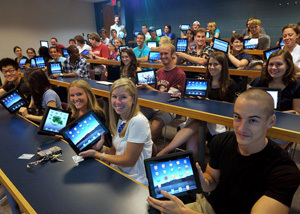UIS offers 8 baccalaureate degree completion programs, 9 masters degrees, and 8 post-baccalaureate certificate programs in a fully online format. UIS also offers 3 masters degrees in a blended format (less than one-half the campus visits normally required).
A key feature of the online program at UIS is that online courses are taught on-load by the
SAME faculty who teach on-campus; the online program is fully integrated with the campus.
The online enrollments have grown continuously since the initiative was started in 1998:

At census for the Spring 2010 semester:
- Online majors made up 26.5% of UIS headcount enrollment. (more than 1 in 4)
- At 1,290, the number of online majors increased by 114 from Spring 2009 (9.7%). (The UIS census headcount increased by 327 students overall.)
- 33.7% of credits were generated in online courses. (more than 1 in 3)
- 53.8% of UIS students took at least one course online. (more than half)
- 31.9% were registered only in online courses. (3 in 10)
- 35.6% of online majors have mailing addresses outside Illinois. (more than 1 out of 3)
- 85.3% of the Illinois students have mailing addresses outside Sangamon County. (more than 5 out of 6)
- The online majors are older than their on campus counterparts, by as much as 9 years on average at the undergraduate level, and by 3 years at the Masters level. The average age is 35.1 for online Masters students, and 34.4 for online undergraduate students.
- Students taking both online and on campus courses take heavier courseloads than either the completely online or on campus students, by about 4 hours at the graduate level.
The online program at UIS has received
national recognition for quality.






 Image Copyright © 2010 Bluemile, Inc.
Image Copyright © 2010 Bluemile, Inc. Image © 2010 MXSweep
Image © 2010 MXSweep
